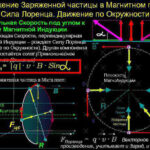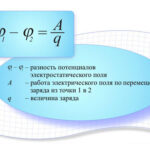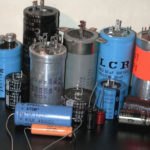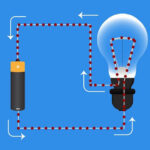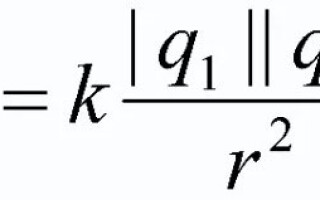There is an interaction force between charged bodies, through which they can attract or repel each other. Coulomb's law describes this force and shows the extent of its effect depending on the size and shape of the body itself. This physical law will be discussed in this article.
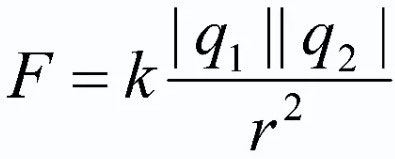
Contents
- 1 Stationary point charges
- 2 Charles Coulomb's torsion scales
- 3 The coefficient of proportionality k and the electrical constant
- 4 The direction of Coulomb's force and the vector form of the formula
- 5 Where Coulomb's law is applied in practice
- 6 The direction of forces in Coulomb's law
- 7 History of discovery of the law
Stationary point charges
Coulomb's law applies to stationary bodies whose size is much smaller than their distance from other objects. There is a point electric charge concentrated on such bodies. When solving physical problems, the sizes of the bodies in question are neglected, because they do not matter much.
In practice, resting point charges are depicted as follows:


In this case q1 and q2 - are positive electric charges, and the Coulomb force acts on them (not shown in the figure). The size of point objects does not matter.
Note! The resting charges are located at a given distance from each other, which in the problems is usually denoted by the letter r. Further in the paper we will consider these charges in vacuum.
Charles Coulomb's torsion scales
This device, developed by Coulomb in 1777, helped to derive the dependence of force, later named after him. It is used to study the interaction of point charges as well as magnetic poles.
Torsion scales have a small silk thread, located in a vertical plane, on which a balanced lever hangs. There are point charges on the ends of the lever.
Under the action of external forces, the lever begins to move horizontally. The lever will move in the plane until it is balanced by the elastic force of the thread.
In the process of movement, the lever deviates from the vertical axis by a certain angle. It is taken as d and is called the angle of rotation. Knowing the value of this parameter, you can find the torque of the occurring forces.
Charles Coulomb's torsional scales look as follows:
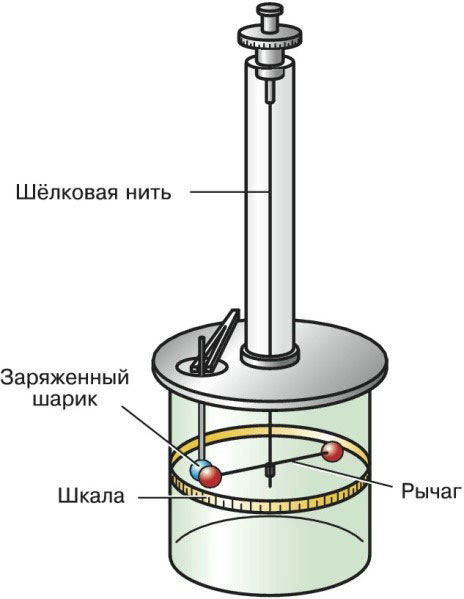
The coefficient of proportionality k and the electrical constant 
Coulomb's law formula has parameters k, the coefficient of proportionality or ![]() - electrical constant. The electrical constant
- electrical constant. The electrical constant ![]() is presented in many reference books, textbooks, internet, and it does not need to be counted! The coefficient of proportionality in a vacuum based on
is presented in many reference books, textbooks, internet, and it does not need to be counted! The coefficient of proportionality in a vacuum based on ![]() can be found using the well-known formula:
can be found using the well-known formula:
![]()
Here ![]() - electrical constant,
- electrical constant,
![]() - number pi,
- number pi,
![]() - coefficient of proportionality in a vacuum.
- coefficient of proportionality in a vacuum.
Additional information! Without knowing the above parameters, it is impossible to find the interaction force between two point electric charges.
The formulation and formula of Coulomb's law
To summarize the above, it is necessary to give the official formulation of the main law of electrostatics. It takes the form:
The interaction force of two resting point charges in a vacuum is directly proportional to the product of these charges and inversely proportional to the square of the distance between them. And the product of the charges must be taken modulo!
![]()
In this formula q1 and q2 - are point charges, the considered bodies; r2 - is the distance on a plane between these bodies, taken as a square; k is the factor of proportionality (![]() for vacuum).
for vacuum).
The direction of the Coulomb force and the vector form of the formula
Coulomb's law can be depicted visually to fully understand the formula:

F1,2 - is the interaction force of the first charge with respect to the second.
F2,1 - is the interaction force of the second charge with respect to the first.
Also, when solving electrostatics problems, it is necessary to take into account an important rule: the same-named electric charges repel and the opposite-named charges attract. This determines the location of the interaction forces in the figure.
If opposite charges are considered, their interaction forces will be directed toward each other, representing their attraction.
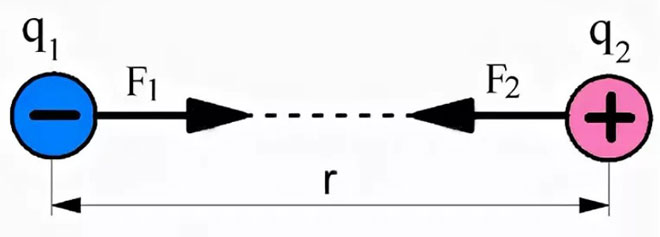
The formula for the basic law of electrostatics in vector form can be represented as follows:
![]()
![]() - The force acting on the point charge q1, on the side of the charge q2,
- The force acting on the point charge q1, on the side of the charge q2,
![]() - the radius-vector connecting charge q2 to charge q1,
- the radius-vector connecting charge q2 to charge q1,
![]()
Important! Having written the formula in vector form, the interacting forces of two point electric charges will have to be projected on the axis in order to put the signs correctly. This action is a formality and is often done mentally without any notes.
Where Coulomb's law applies in practice
The basic law of electrostatics is the most important discovery of Charles Coulomb, which has found its application in many fields.
The work of the famous physicist was used in the process of inventing various devices, instruments, apparatus. For example, the lightning rod.
Using lightning rods, houses and buildings are protected from lightning during thunderstorms. Thus, the degree of protection of electrical equipment is increased.
Lightning rods work on the following principle: during a thunderstorm strong induction charges gradually accumulate on the ground, which rise up and are attracted to the clouds. This creates a considerable electric field on the ground. Near the lightning rod, the electric field becomes stronger, so that the corona electric charge is ignited from the tip of the device.
Then the charge formed on the ground begins to be attracted to the cloud charge with the opposite sign, as it should be according to Charles Coulomb's law. Then the air is ionized, and the electric field strength becomes lower near the end of the lightning rod. Thus, the risk of lightning entering the building is minimal.
Please note! If a building with a lightning rod struck, there will be no fire, and all the energy goes into the ground.
Based on Coulomb's law, a device called "Particle Accelerator" was developed and is in great demand today.
This device creates a strong electric field, which increases the energy of the particles entering it.
The direction of forces in Coulomb's law
As stated above, the direction of the interacting forces of two point electric charges depends on their polarity. That is, the same-neighbor charges will repel and the opposite-neighbor charges will attract.
Coulomb forces can also be called a radius-vector, because they are the same as the radius-vector. they are directed along a line drawn between them.
In some physical problems there are bodies of complex shape, which cannot be taken as a point electric charge, i.e. to neglect its size. In this situation, the body in question should be divided into several small parts and each part should be calculated separately, applying Coulomb's law.
The force vectors obtained in the division are summed by the rules of algebra and geometry. The result is the resulting force, which will be the answer to the problem. This method of solution is often referred to as the triangle method.
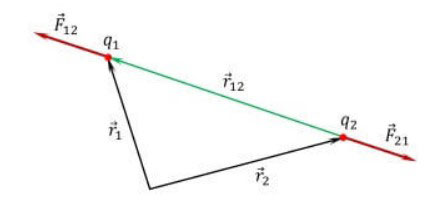
History of the discovery of the law
The interaction of two point charges by the law discussed above was first proved in 1785 by Charles Coulomb. The physicist managed to prove the veracity of the formulated law using torsion scales, the principle of operation of which was also presented in the article.
Coulomb also proved that there is no electric charge inside a spherical capacitor. This is how he arrived at the assertion that the magnitude of the electrostatic forces can be changed by changing the distance between the bodies in question.
Thus, Coulomb's law is still the most important law of electrostatics, on the basis of which many great discoveries have been made. Within this article, the official formulation of the law has been presented, and its constituent parts have been described in detail.
Related articles:
